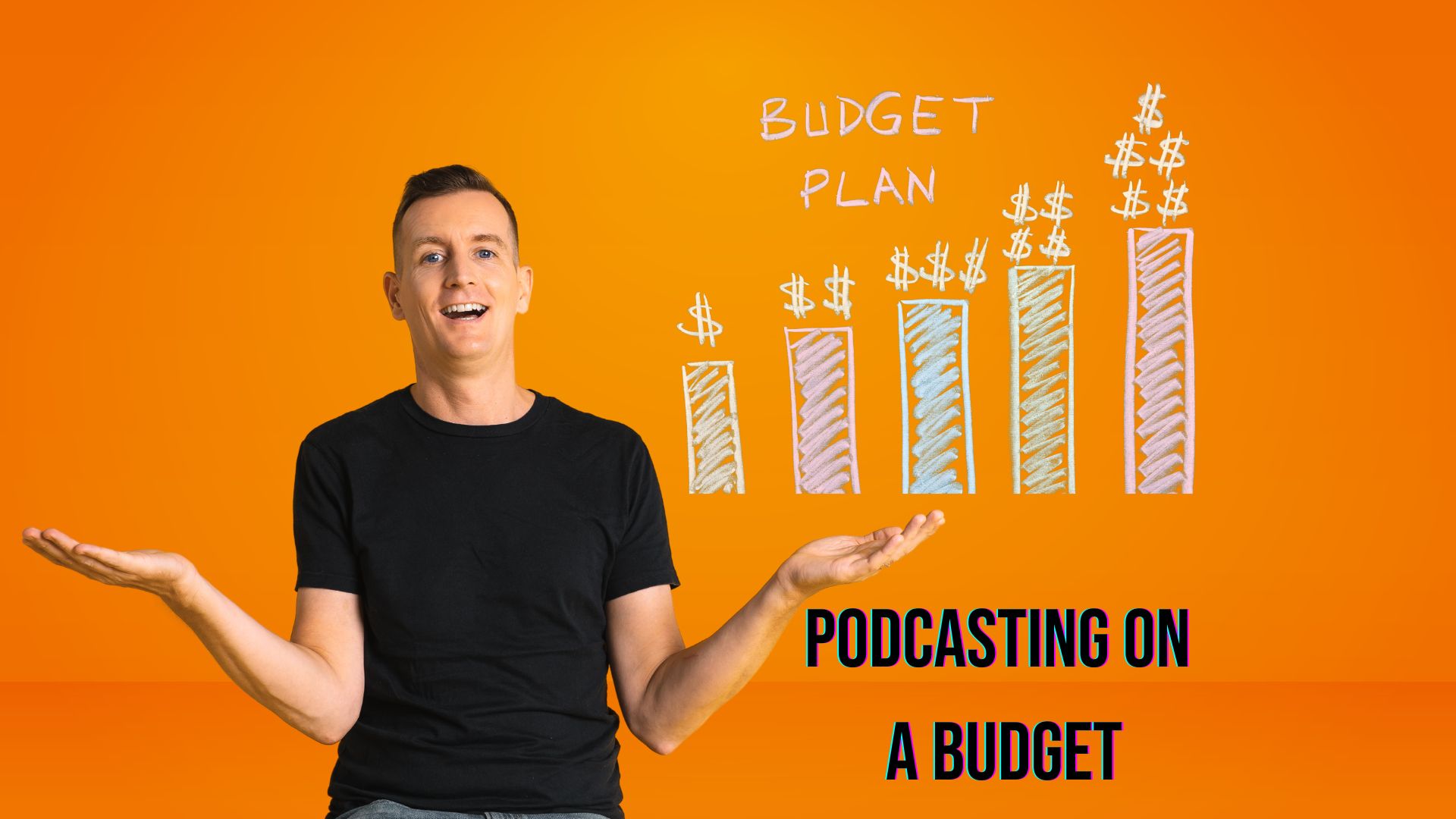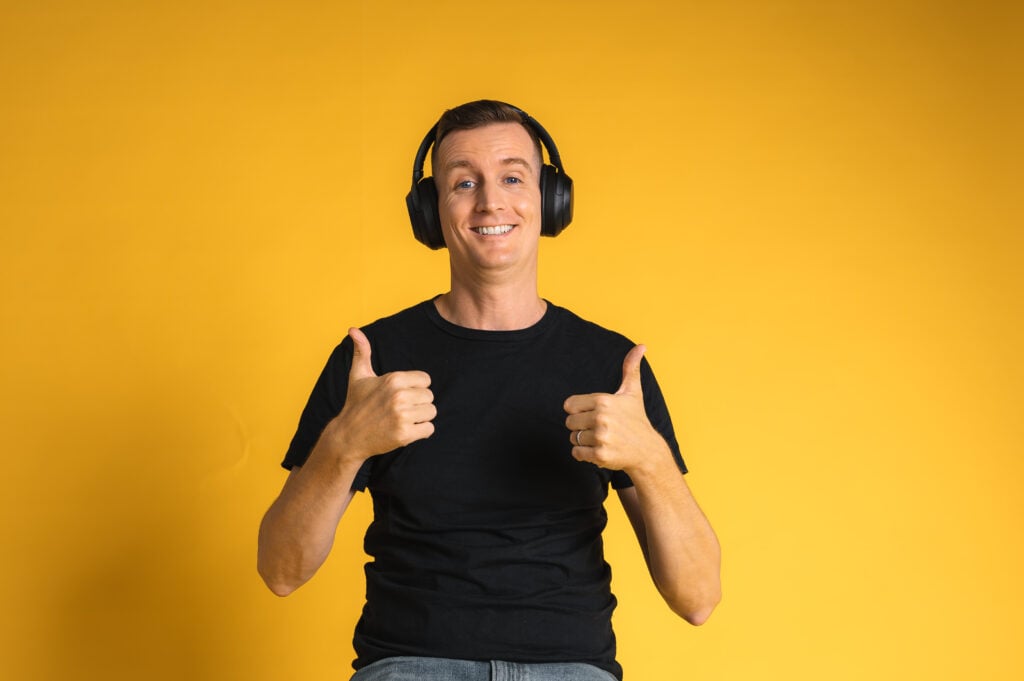Smarter Podcasting helps you learn how to start your own podcast. In this episode, I share how you can start your podcasting journey with a tight budget.
I’m Niall Mackay, The Podcast Guy. I started my podcasting journey in 2019, and I’m helping my clients around the world create their own podcasts with my services.
Many people believe that starting a podcast requires expensive equipment and a complicated setup. However, I am living proof that you can start podcasting on a budget. I joined Brian Biedenbach on the Good Podcasting show to look back on my podcasting journey and offer insights into recording on a budget.
My journey was “starting small, growing steadily, and continuously refining the craft”. From minimal equipment to branching out into catering to clients worldwide, the journey was filled with learning curves and challenges. These experiences, however, fueled my commitment to helping others navigate their podcasting endeavors.

Tip number 1: Only Buy Necessary Equipment
Contrary to popular belief, you don’t need to invest in the latest high-end microphones or studio setups to produce a great-sounding podcast.
Armed with a 2010 MacBook Pro, GarageBand software, and a trusty Blue Yeti USB mic, my podcasting journey began. It wasn’t a state-of-the-art setup, but it laid the foundation for what was to come. The most expensive thing I had was a passion for podcasting.
“A barrier for many people to start a podcast is the belief that it requires expensive or complicated equipment.” – Niall
While professional equipment undoubtedly enhances the audio quality, it’s not the sole determinant of a successful show. Instead, prioritize a decent-quality microphone that captures clear audio and suits your voice. A basic headset or even your smartphone’s built-in microphone can be sufficient in the initial stages.
My recommended podcast start kit:
Podcast Microphone
There are many types of podcast microphones: USB, XLR, dynamic, or condenser. It depends on your needs, budget, and purpose to choose the suitable one.
Here are my recommendations for a friendly-budget Mic:
They’re all below $100 but I think they still meet your needs as a beginner. You should try these budget-friendly gears first to see which type is suitable for you.
“You’re paying for experience. You only figure things out with experience.”

Computer/Laptop
A computer or laptop is essential for recording and editing audio. You can use a variety of software programs to record and edit your podcast, including Audacity, GarageBand, and Adobe Audition.
You can use a computer or laptop to promote your podcast on social media and other online channels.
Headphones
Believe me, using podcast headphones really changes your recording and editing process. You don’t have to invest too much, brands like Sony and Audio-Technica offer affordable studio headphones that deliver clear audio for monitoring your recordings.
- Audio-Technica ATH-M20x
- Sennheiser HD 280 PRO
Tip number 2: Home Studio
If you’re thinking about starting a podcast, you may be wondering if you need to have your own studio. The answer is no! You can set up a podcast studio at home without any special equipment or training.
The first thing you need to do is find a quiet space in your home to record your podcast. This could be a spare bedroom or even just a corner of your living room. The important thing is that the space is free from distractions and that you won’t be interrupted while you’re recording.
Podcast Equipment
Some additional equipment to enhance your setup:
- A boom arm
It allows you to position your microphone more conveniently. Instead of being tethered to a desk, you can move the microphone to the ideal height and angle for comfortable and efficient recording.
A boom arm will cost you about $15-30.
- Pop filter
Attach a pop filter to your microphone to reduce plosive sounds (like ‘p’ and ‘b’ sounds) that can cause distortion. It will cost you just about $10-15
- Shock mount
In addition to a pop filter, consider complementing your boom arm with a shock mount to further reduce vibrations. These accessories contribute to a more professional and polished audio output.

- Studio Furniture
Comfortable and ergonomic studio furniture is important for long recording sessions. A good chair and desk will help you to stay focused and productive.
Soundproofing
Soundproofing is a crucial aspect of creating a high-quality podcast, ensuring that your recordings are free from unwanted external noises and disturbances.
- Heavy Curtains or Blankets
Hang heavy curtains or blankets on walls to absorb sound and reduce echoes. These materials can be a cost-effective alternative to acoustic panels.
- Foam acoustic tiles
These tiles are often made from acoustic foam, which is designed to absorb and diffuse sound waves. Foam tiles are easy to install and can be attached to walls and ceilings using adhesive backing. Some may require additional adhesives or mounting hardware.

Tip number 3: Free Recording and Editing Software
Recording and editing software is essential for creating high-quality podcasts. There are a variety of software programs available, each with its own strengths and weaknesses.
While some premium editing software might boast additional features, the free counterparts provide ample tools for basic editing, ensuring your podcast maintains a professional quality without unnecessary expenses.
- Descript
My number one recommendation, no need to say, Descript. It’s a text-based editing software that helps you edit a podcast as easily as a text. Descript now has AI actions that help you write content, social media posts or you can ask it anything.
It has a free plan for beginners, check it out.
- Audacity
Audacity is a free and open-source digital audio editor and recording software available for Windows, macOS, and Linux. It features multitrack editing and recording, noise reduction, and a wide range of effects.
- GarageBand
GarageBand is a free music creation software developed by Apple for macOS, iPadOS, and iOS devices. It allows users to create music or podcasts.
Tip number 4: Seeking Help from Your Friends
This is my real-life story. As I told you, at the beginning I didn’t buy too much equipment. I have a friend, Lewis, who is a music producer. Sharing my vision with friends like Lewis opened doors I never imagined. He has microphones, headphones, and audio interfaces.
He was so kind, he lent me equipment and taught me how to use editing software. He inspired me a lot during the first stage when I didn’t know much about this industry.
Now he’s still one of my best friends and my music producer. If you want to have a unique track that can elevate your brand, contact our music service.
It is also important to remember that there is no shame in borrowing equipment or asking for help from friends. In fact, it is often the best way to learn new things. So don’t be afraid to reach out to your friends for help if you need it.
Tip number 5: Learning and Networking
Knowledge is your greatest asset. Learn the ins and outs of podcasting through online resources, forums, and communities.
There are many free sources like blogs, YouTube, and podcasting communities that often offer step-by-step instructions on various aspects of podcast creation, from recording techniques to editing tips.
If you want to have someone to guide you or give you advice, you can enroll in podcast courses. It will cost you, but it’s worth it. I also provide free consultant and podcast audits.
Building connections within the podcasting community is key. Reach out to other podcasters, both new and experienced. Networking can open doors to collaborative projects, guest appearances, and shared learning experiences. Don’t hesitate to ask questions, share your experiences, and seek mentorship within the podcasting ecosystem.
Podcasting On A Budget – Conclusion
Don’t worry if you have a tight budget when starting podcasting. I began my podcasting journey with minimal equipment, using a 2010 MacBook Pro, GarageBand software, and a Blue Yeti USB microphone. From borrowing gears from your friends to buying low-priced ones, these still made me what I am today.
Moreover, expanding your skill set and exploring advanced editing tools can add a professional touch to your episodes. While beginning with cost-effective solutions is wise, recognizing the evolving needs of your podcast and being open to strategic investments can contribute to sustained growth and increased listener engagement.
Begin your show now!


